Reading Glasses Stereoscope
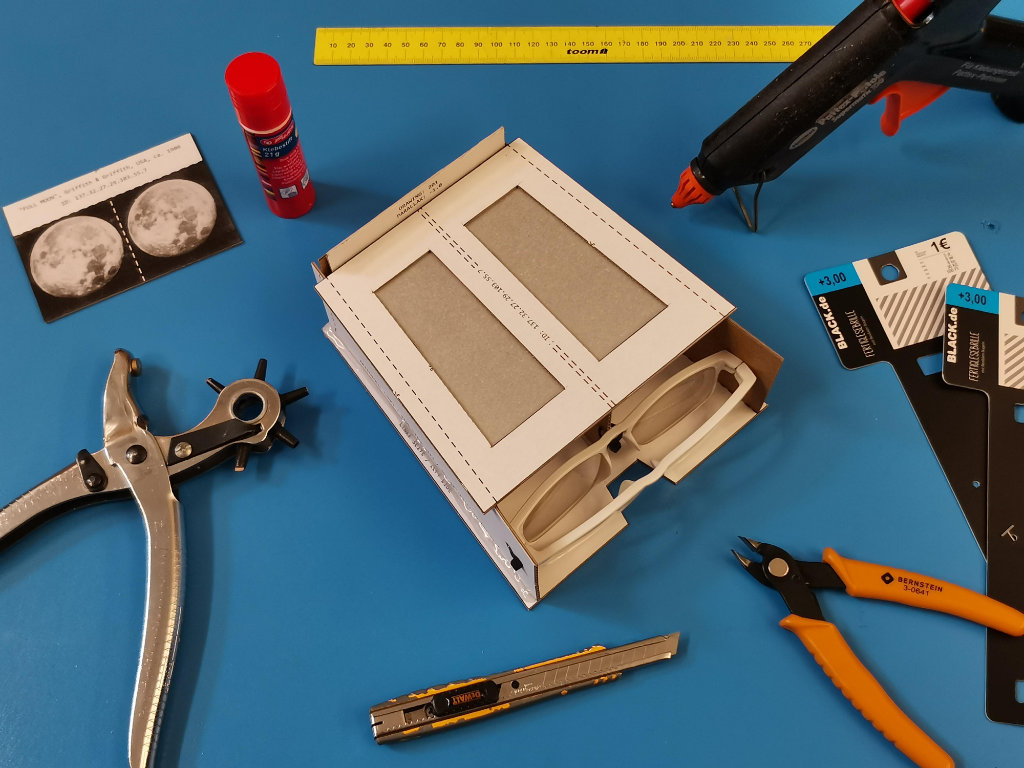
Parametric craft sheet generator & workshop
Getting older has its downsides and one of them is deteriorating eyesight. Therefore, it's no surprise that my interest in the reading glasses section in 1€-shops grew over the last few years. The optical quality of cheap ready-made reading glasses is quite good and that made me wonder if those lenses could be also used for other purposes. The result of these thoughts is a new take on a rather old invention: a DIY reading glasses stereoscope. When looking at a stereo photo through this apparatus, each eye is presented a slightly different picture and the two individual photos merge in the viewer s brain into one single image that appears as a three-dimensional scenery.

Since this is a very simple, yet fascinating device, I thought that it would be nice if others can build it, too. Therefore, I decided to design a craft sheet. To address the problem that reading glasses come in all sorts of shapes and sizes and that the craft sheet should fit for all of them, I made an interactive online tool, the parametric craft sheet generator.
You simply enter the size of the reading glasses and the generator calculates the geometry of the different parts. Print those out and glue them together, attach two similar plastic reading glasses with a few zip-ties and you have a stereoscope that would have made everyone envious in the Victorian age. This PDF with step-by-step instructions will help you.
How the generator works
The generator itself is a website, programmed in Javascript, which draws the templates for the parts on three HTML-canvases. The CSS makes sure that each canvas is neatly printed on a separate sheet of paper - you just have to set the printing size to 100%. If you want to print your own template, use the website with a laptop or desktop computer, as the generator isn't really optimized for mobile devices.
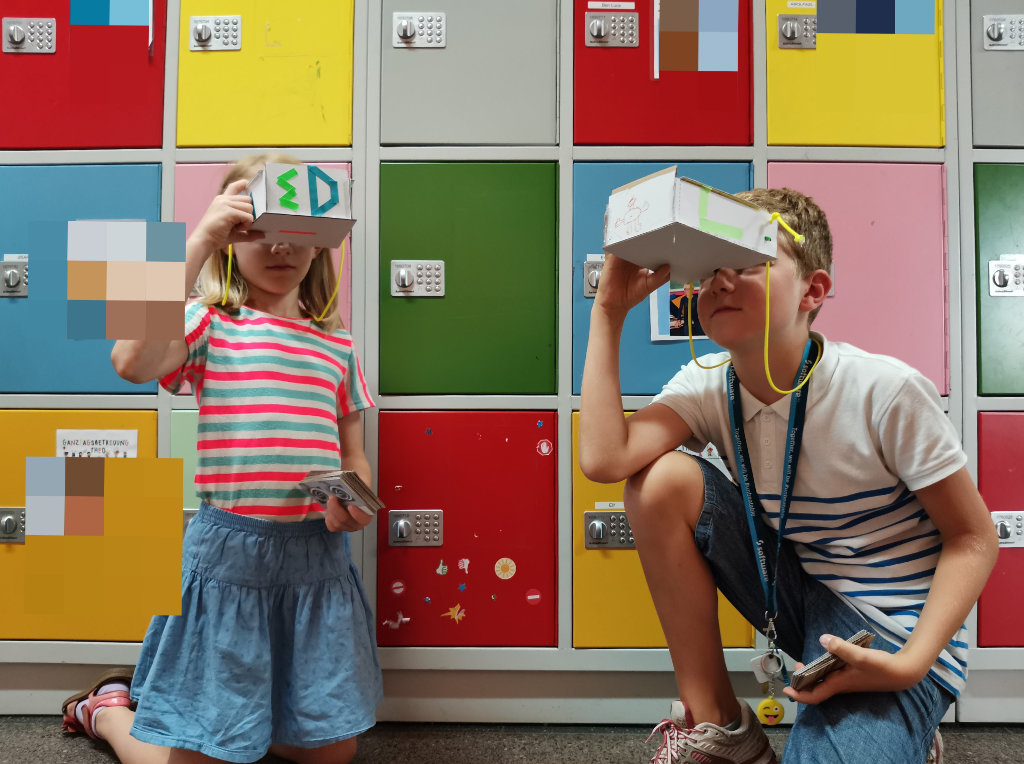
Kids Workshop
My partner Kati and I are currently artists-in-residence of a program called FlieKü in Frankfurt/Preungesheim, where we do all kinds of artistic activities. One of them was a workshop, where we offered the local kids to build their own reading glasses stereoscope. It's an interesting DIY project, where the result yields a certain wow effect. Furthermore, making a stereoscope also teaches about visual perception, about the history of technology and by building the device the kids gained a bit of an understanding of how VR‑goggles work.
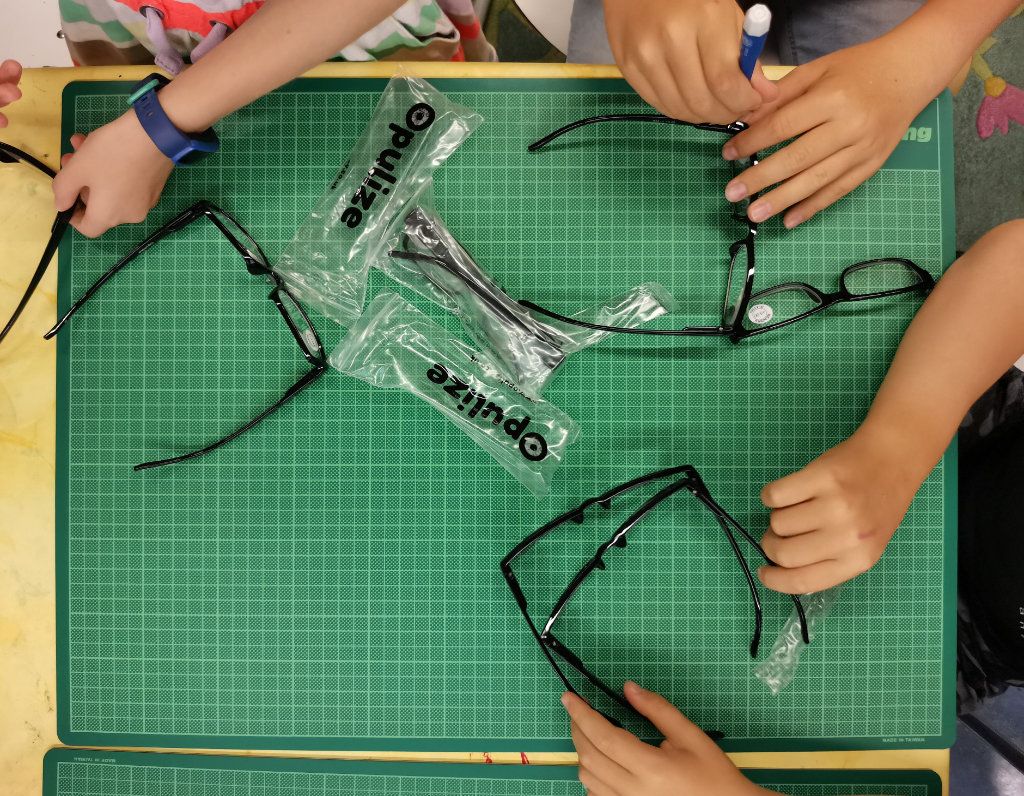
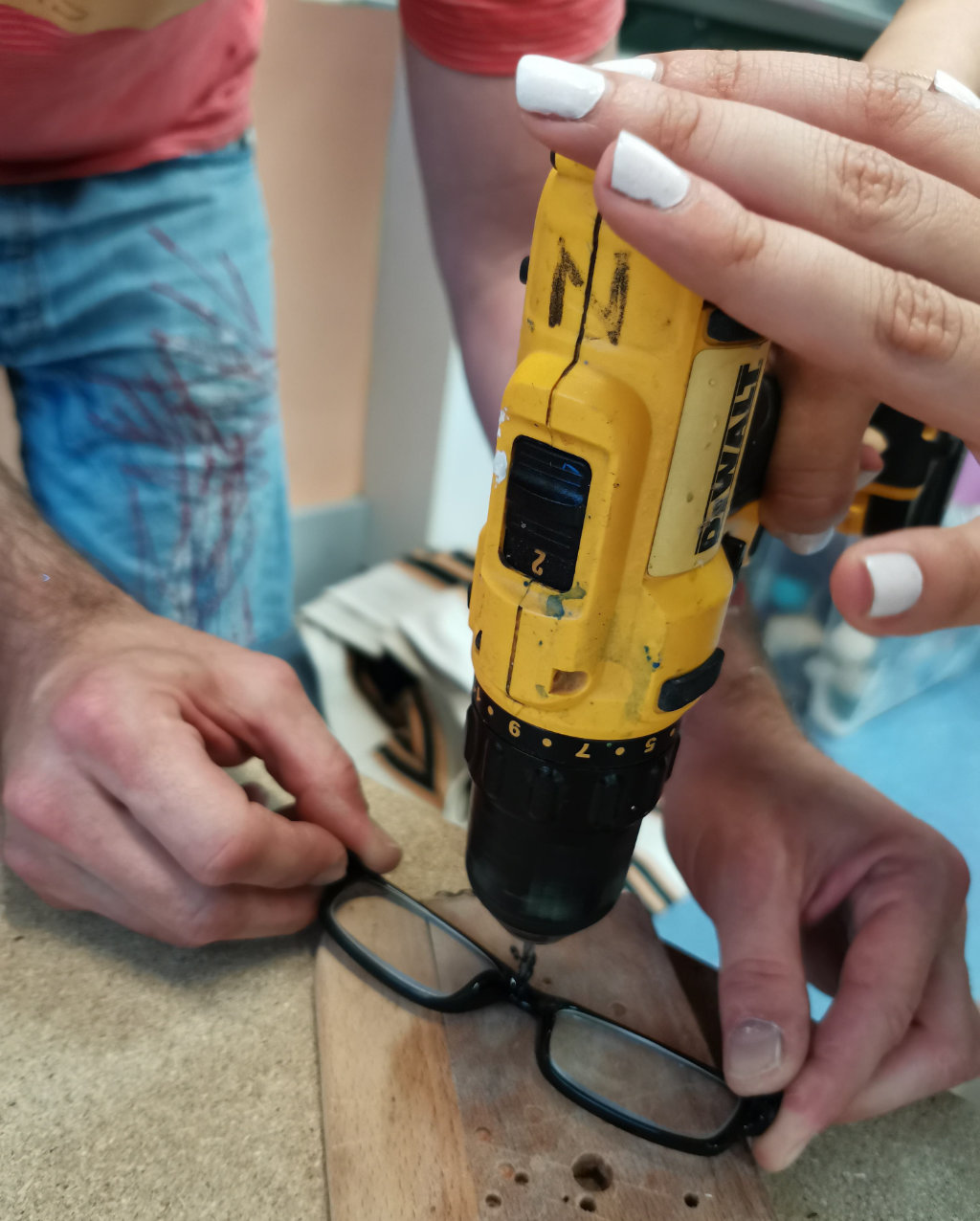
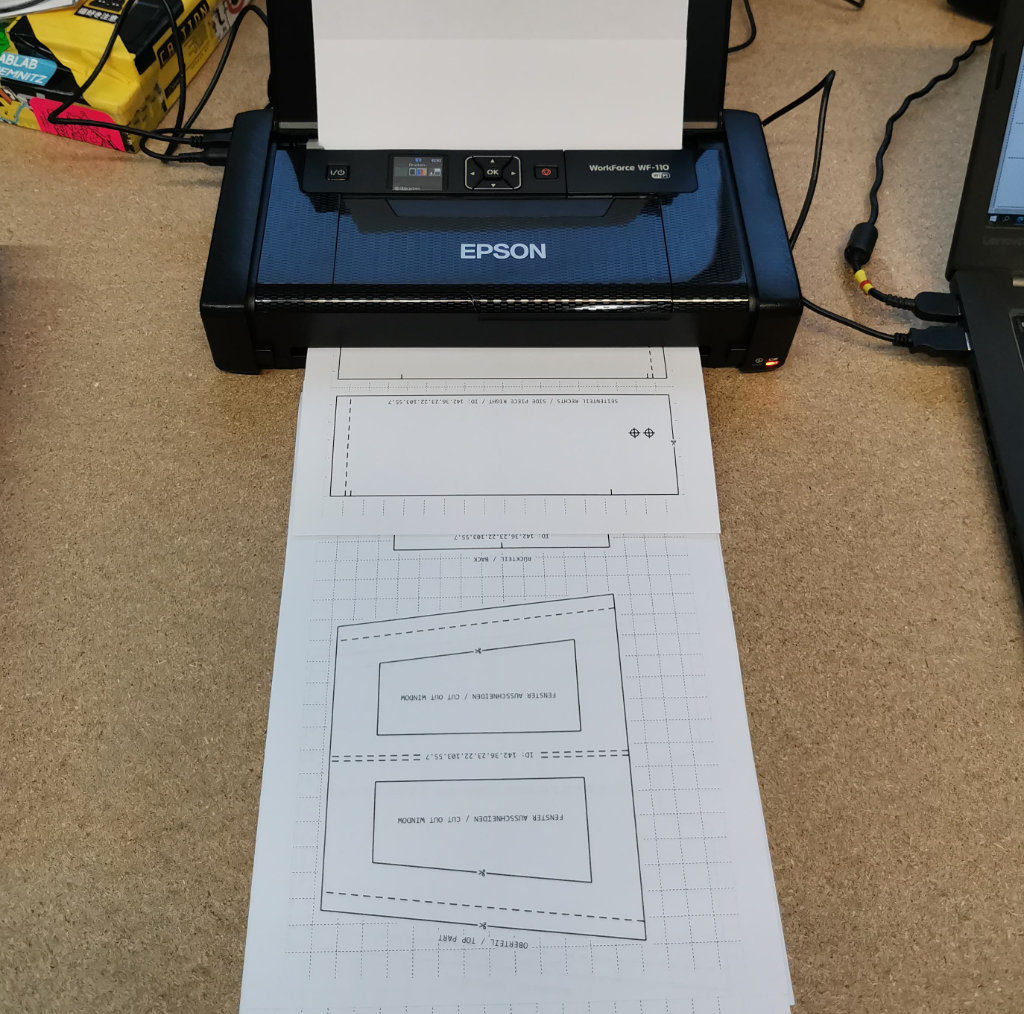
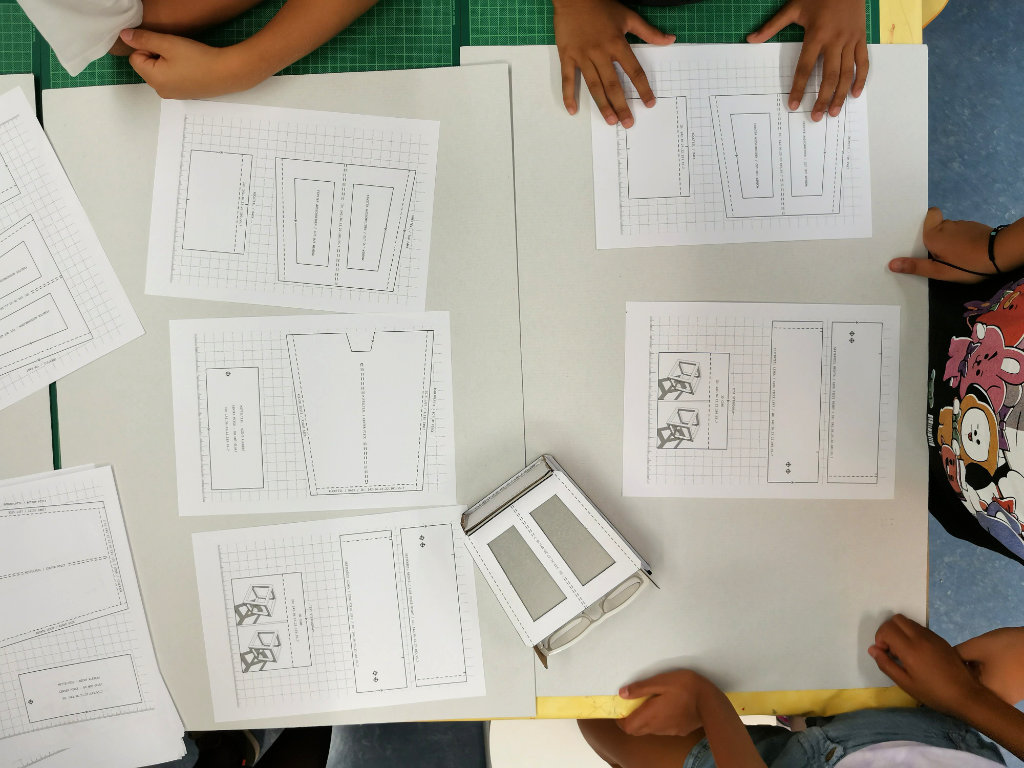
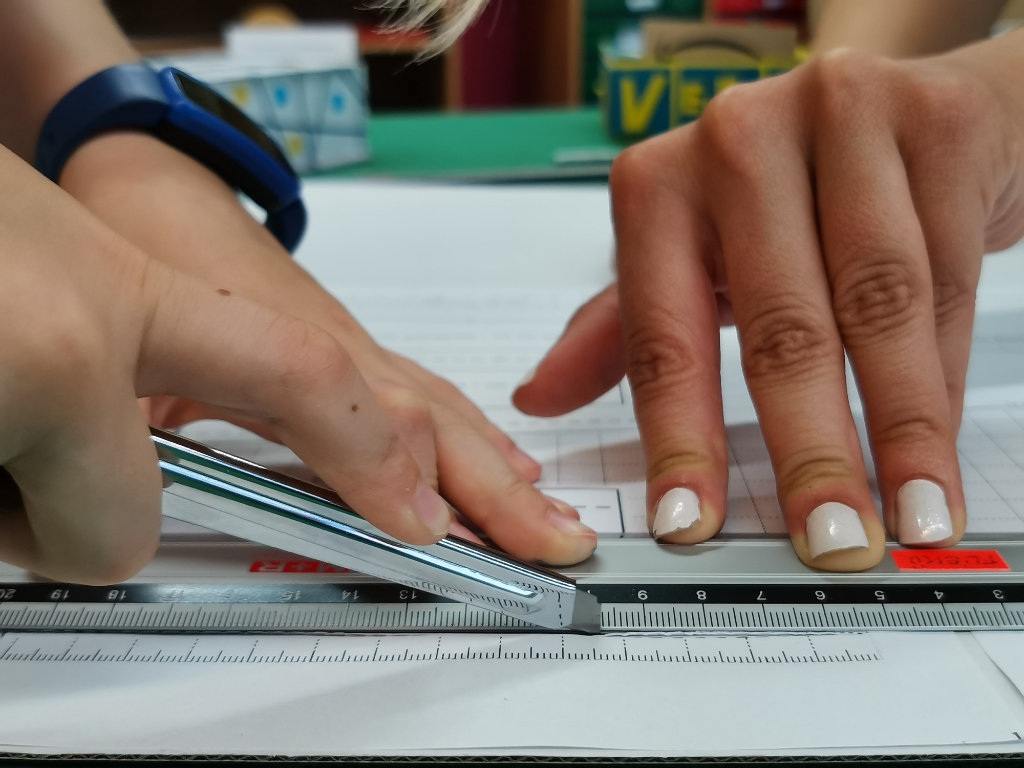
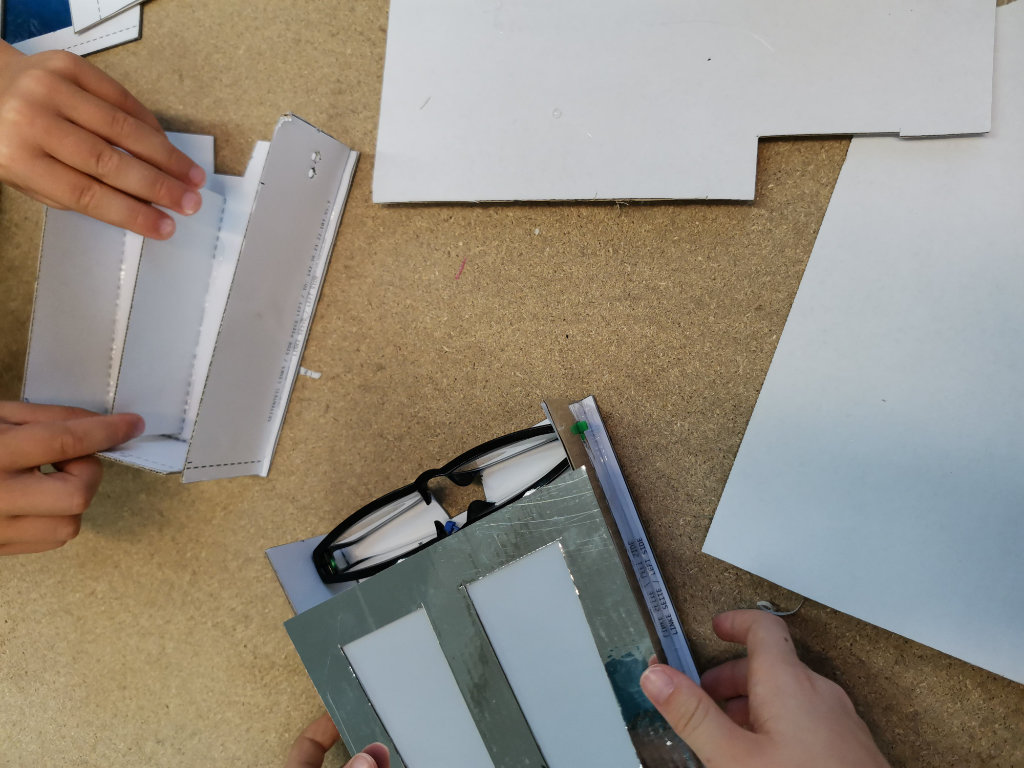
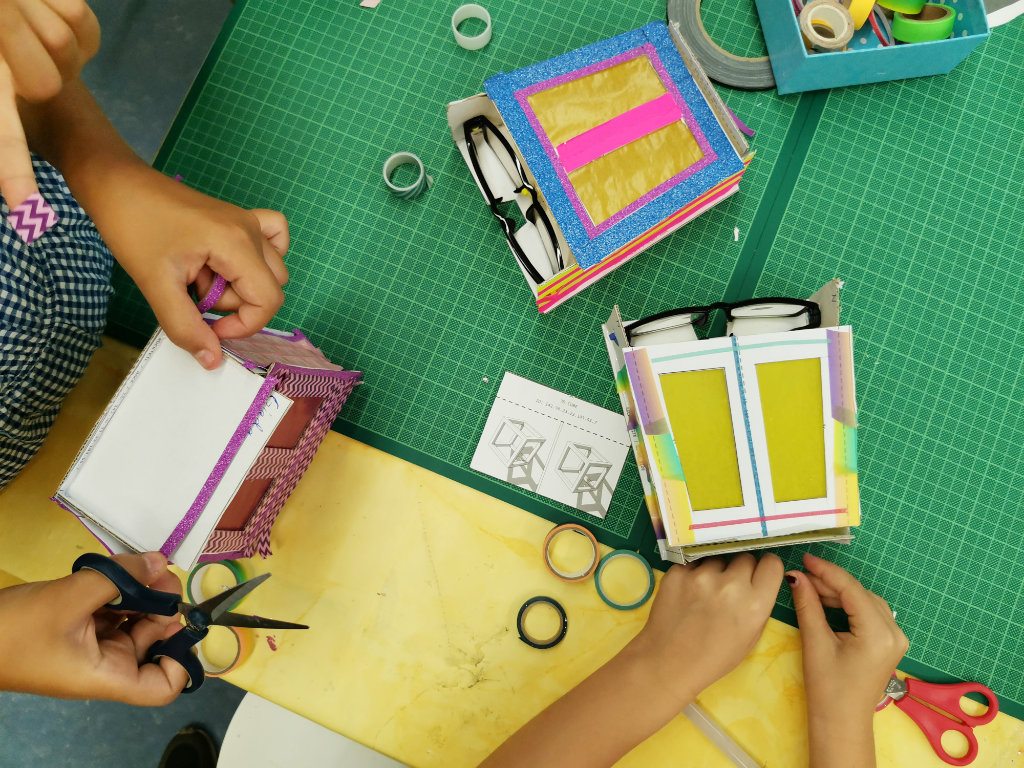
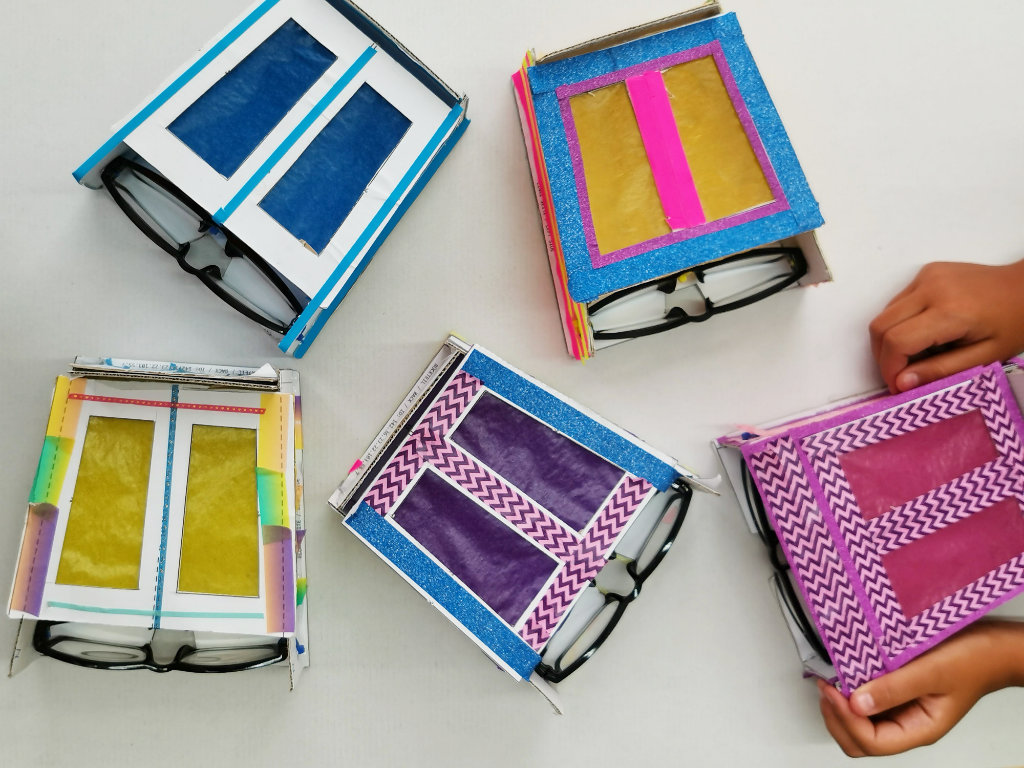
Stereographs
At the end, we took a few stereo photos together. The photos were taken by hand with a smartphone and no further aid. I first took one picture for the left eye, then I moved my body weight to the side and took the photo for the right eye. This was not at all precise and the kids also moved a bit between taking the two pictures, but the result turned out to work surprisingly well, when seen through the stereoscope. Below are wiggle gifs of the stereographs, which give an impression of the 3D effect.
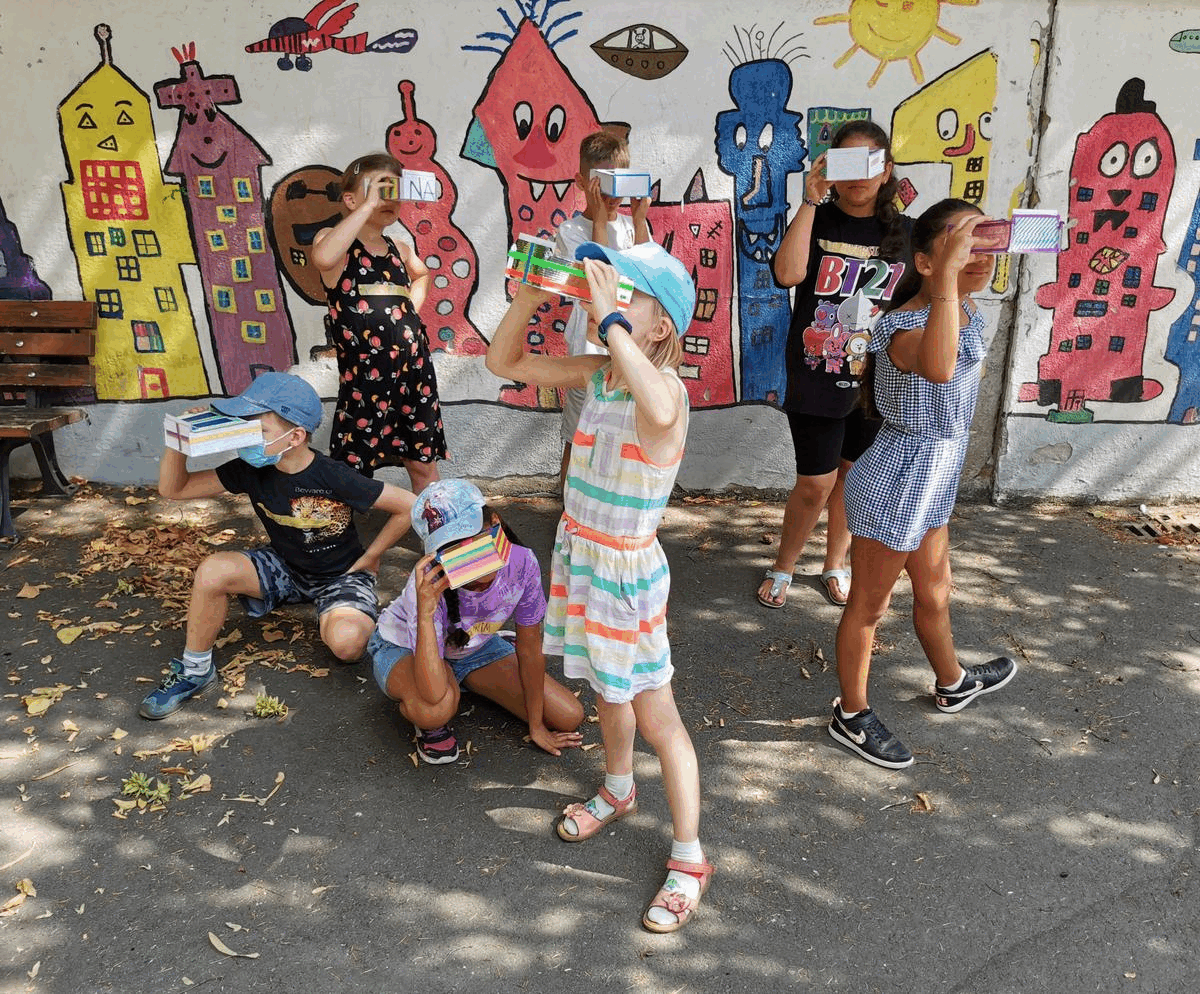
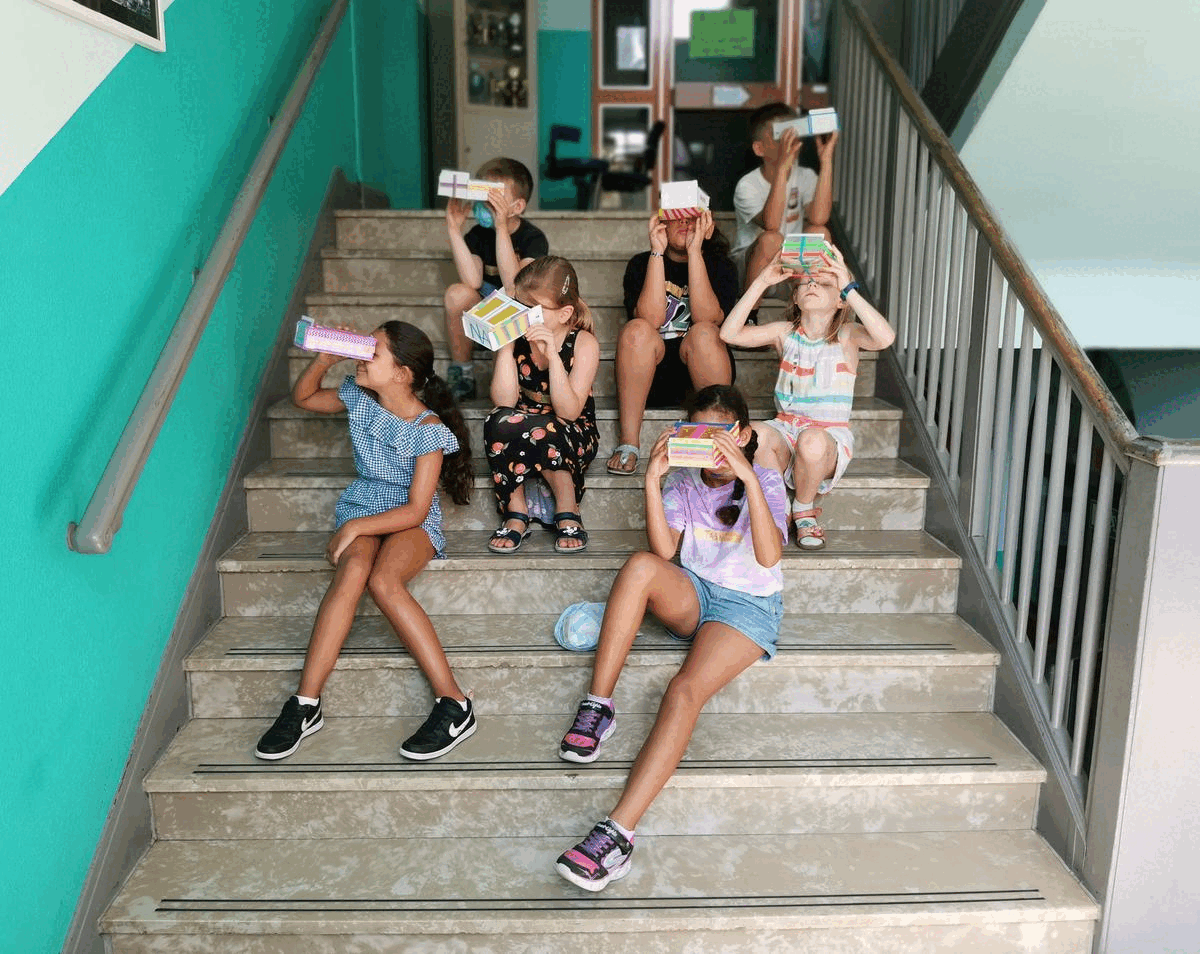
Another way to look at the 3D photos without a stereoscope is the cross-eye technique: The idea is to look with the right eye at the left photo and with the left eye at the right photo. Magically, the scene will appear three-dimensional. It's not nearly as comfortable as watching the photos with a stereoscope, though.
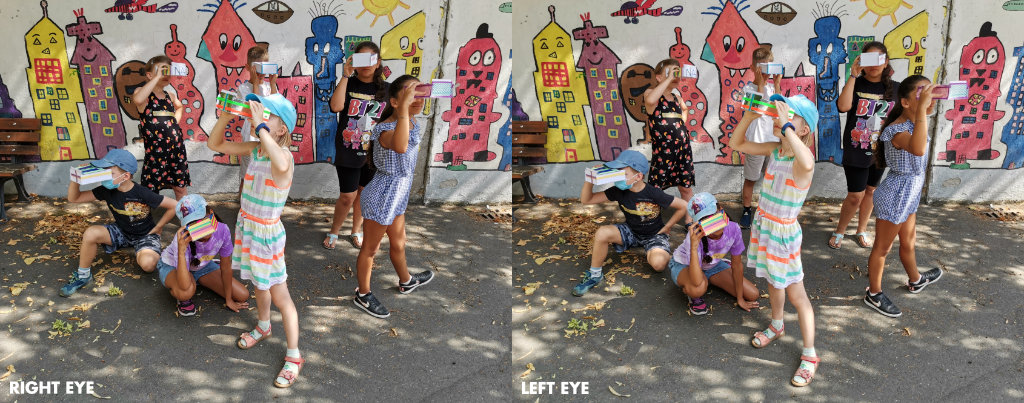
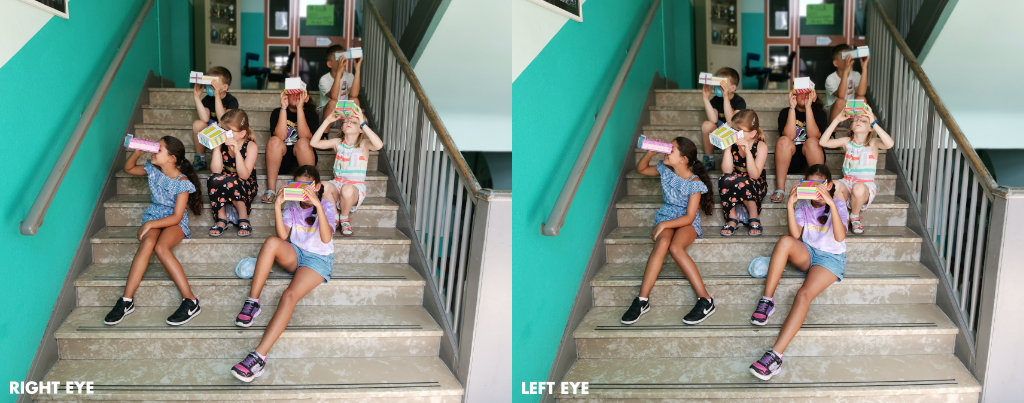
Thanks & credits
The parametric craft sheet generator and the workshop were created as part of Crespo Foundation's FlieKü residency. Thanks to Kati for co‑conducting the workshop and thanks to Nirvana and Marie for helping us. The workshop was organized by Angela Freiberg (Quartiersmanagement Preungesheim) and Sebastian Clement of the Theobald-Ziegler-Schule - many thanks for that!